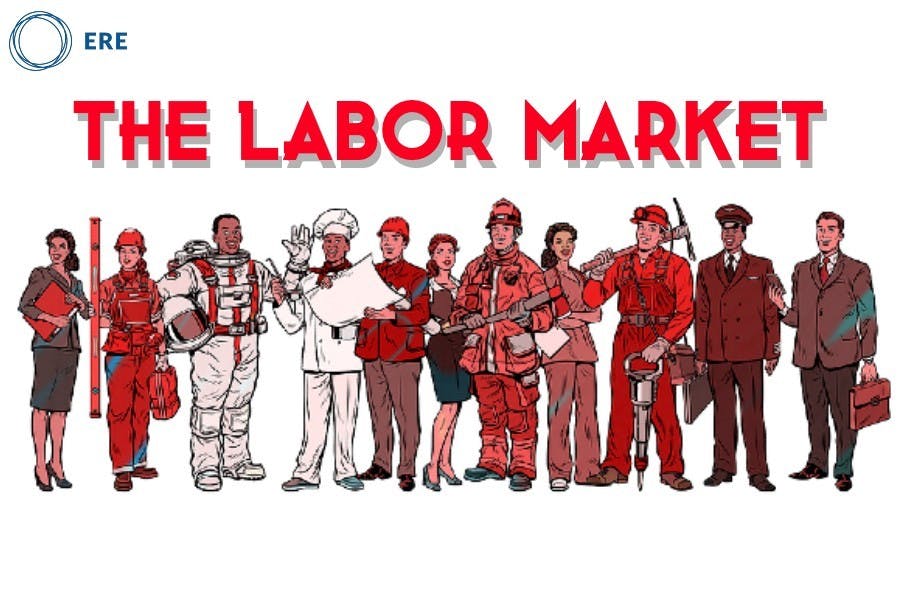Today’s Labor Market — The Good News
The labor market continues to crank out some astonishing numbers despite several factors that could disrupt progress. As has been the case often lately, there’s good news and bad news.
Let’s start with the good news. The U.S. economy added 428,000 new jobs in April, in line with economist expectations and continuing an impressive stretch of growth. The labor market has averaged approximately 551,000 jobs added each month since January 2021, and the monthly pace of job gains since the beginning of last year is almost three times the pre-Covid norm.
Today’s Labor Market — The Not-So-Good News
The one unexpected and unfortunate note in the Bureau of Labor Statistics’ latest monthly jobs report was the decline in labor force participation. The number of people employed or unemployed and looking for work had increased each month from September 2021 to March 2022, but April’s report showed a decline of 363,000.
It was anticipated that April would be the month that the U.S. labor force reached its pre-pandemic levels, but we will have to wait a little longer to reach that milestone.
Another trend heading in a different direction than anticipated is the monthly count of quits and job openings. While we predicted the numbers would remain elevated, we thought they’d begin to moderate from the peaks of last year. That is not the case since both metrics just set new records. In March, there were 11.5 million job openings, and voluntary quits reached 4.5 million.
Quits have been above the 4 million mark every month since June 2021. These quits do not mean that workers are leaving the labor force. In this competitive market, people quitting their jobs typically have another one lined up. They are poached by other companies and counted among the 6.7 million hires in March.
Turnover Continues — When Will It Let Up?
If 4.5 million quits sounds like a lot, it is. For context, I am in the Dallas-Fort Worth metropolitan area, one of the largest job markets in the country, at just above 4.0 million people employed. Imagine every employee in Dallas-Fort Worth quitting their job in a single month, and then that happening month after month. That’s the transition the labor market has been going through since last year.
And it shouldn’t be too surprising that the industries with the highest shares of job openings are in health care, professional and business services, and hospitality (including restaurants, retail, hotels and entertainment). While the job openings and quits have been disproportionately high in hospitality and retail, turnover has increased in nearly every industry over the past year.
With all the resignation notices, employers are keeping plenty of open positions posted. The number of job openings increased to 11.5 million, slightly eclipsing the previous record from December 2021. To add some more perspective, the number of job openings averaged 6.4 million from 2015 through 2019. However, this remains a field day of opportunity for those in talent acquisition. The challenge, though, is that there are roughly half as many job-seekers who are unemployed and looking for work as there are open jobs.
Inflation Cuts into Wage Gains
Inflation is another headwind employers are fighting on multiple fronts. I’ve heard concerns from HR teams recently about how inflation is essentially another competitive threat to losing talent. Some companies have already re-adjusted pay bands to compete across industries and locations, especially where remote hiring is a threat. Now there is more concern that living costs could prompt some employees, who are otherwise happy with their current job, to consider new opportunities to pay their bills.
As they relate to inflation, here are a couple metrics to watch: The Producer Price Index (PPI) measures the change in selling prices received by U.S. businesses that produce goods or services. In other words, it measures the growth in what it costs to produce the goods you buy. The PPI was 11% in April on an annualized basis, down from March’s record 11.5%.
Also, the Consumer Price Index (CPI) measures what consumers pay for a select set of goods and services, which is a measure of the change in cost of living. The CPI was 8.3% on an annual basis in April, down slightly from 8.5% in March.
The fact that PPI and CPI growth moderated in April is good news for consumers, who have seen rising prices eat into what would otherwise be large wage gains. But both numbers will have to go down substantially for consumers to feel the impact soon.
Outlook and What to Watch?
The good news is that many people received massive pay bumps the last two years, which offsets these increases, right?
Well, not exactly. Even those that did receive a considerable raise have seen much of it wiped out by inflation.
This might not be the case for your job, but people also worked fewer hours this April compared to a year ago. Factoring inflation and fewer hours means that the average U.S. worker’s real weekly wage growth declined 3.4% during the past year.
On top of those factors, the war in Ukraine and more supply chain challenges from China create additional uncertainty and disruption.
Still, the U.S. labor market has been resilient. The U.S. continues to add jobs at an incredible clip, but we will be on watch for any slowdown looming later this year or in 2023.
Finally, it’s important to remember that the current labor market dynamic is not the norm, with each month bringing what seems like a new record for hires or labor demand. At some point, things are bound to moderate because current growth is not sustainable.
